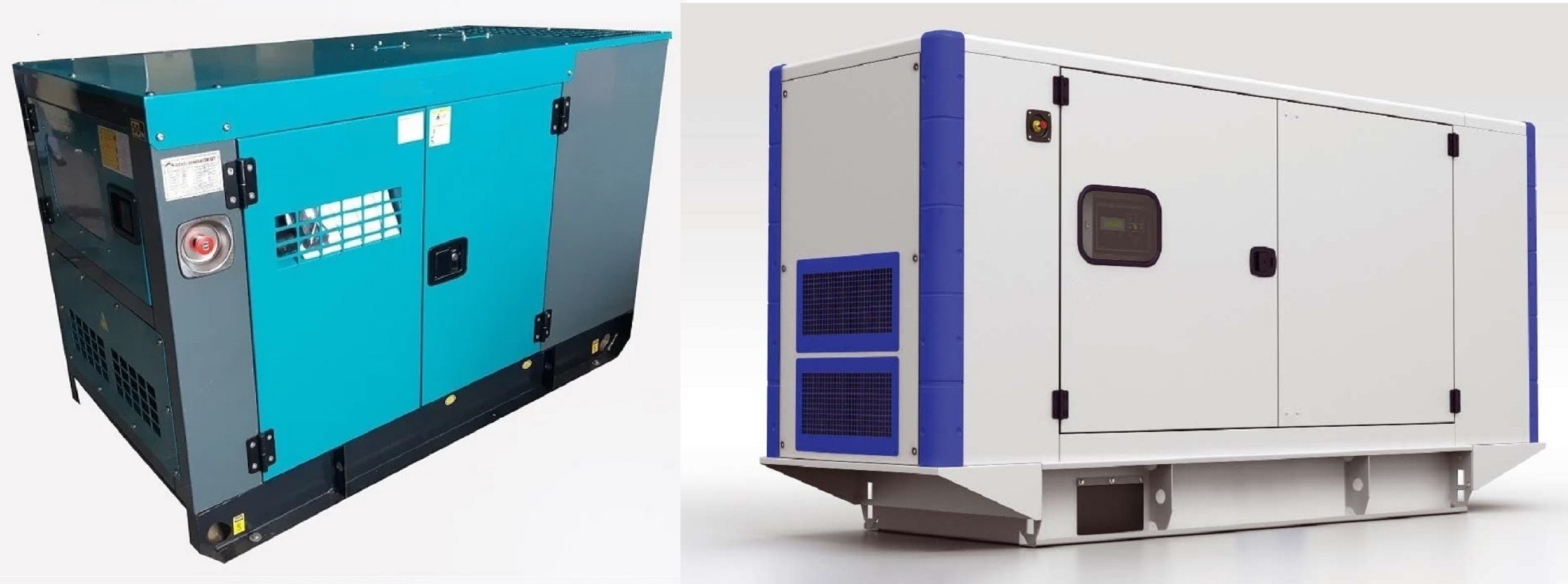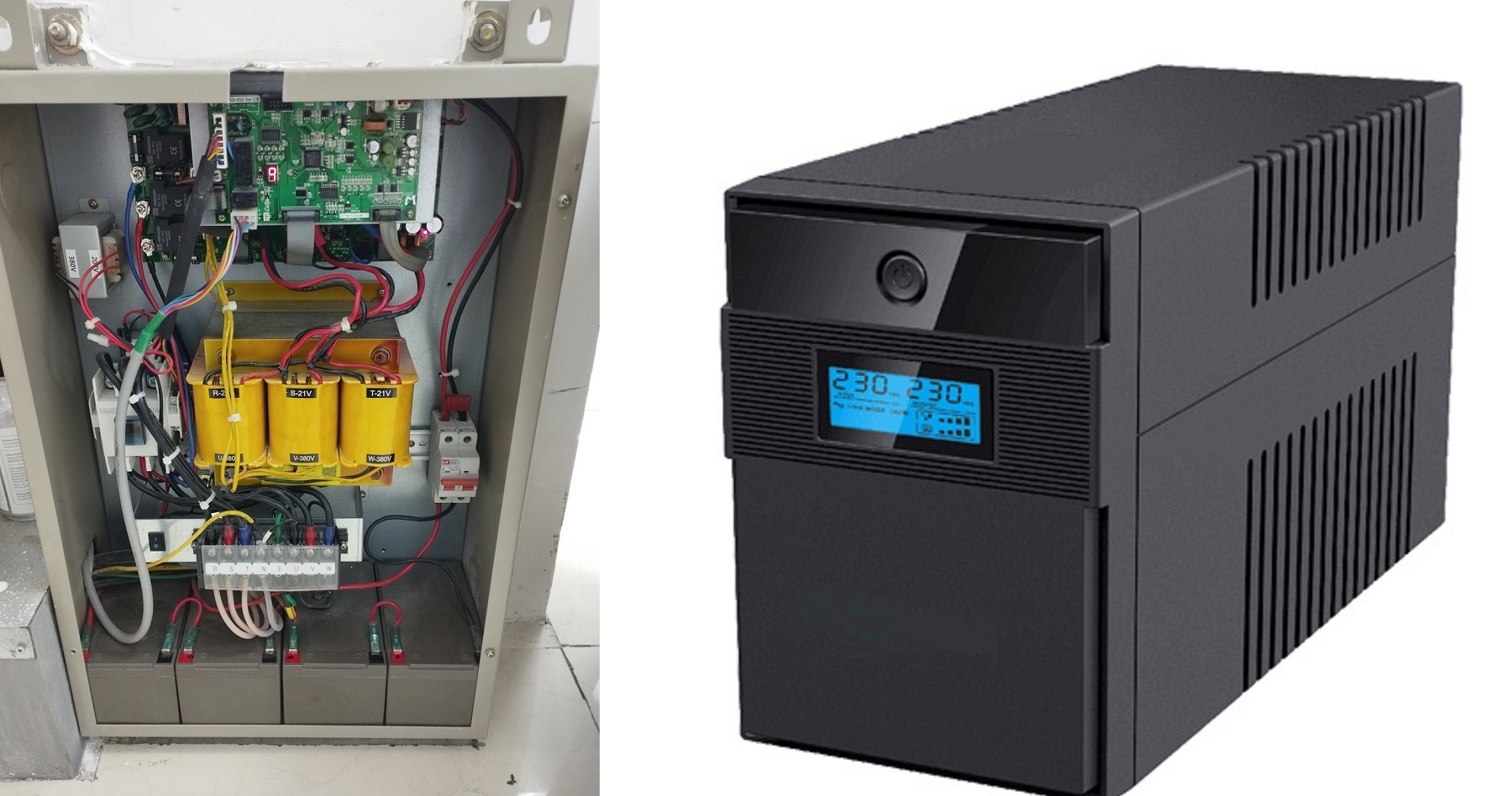EM – Elevator is a means of transportation with a regular operating frequency, so it is necessary to maintain a power source. In the event of a power outage, a backup power source is required. Is it as simple as we think?
Generators for elevators
Normally, elevators operate with 3-phase 380 V or single-phase 220 V AC power. During operation, it is inevitable that there will be power outages or other incidents that disrupt the power supply. How to get the highest efficiency, help the elevator always work well in any situation?
To do so, before proceeding to install the elevator, it is necessary to consider a feasible backup plan. It is to install a generator as a backup source in case the normally used power source is cut off.

Some types of 3-phase 380 V generators can be used as backup power for elevators
According to engineer Nguyen Thanh Phong, Vietnam Institute of Lift Engineering Application (VILEA), the only suitable backup power source for elevators can be a generator (3 phase or 1 phase with suitable capacity).
The installation of backup power must be included in the elevator installation plan from the beginning because this is a very important item. The analysis shows that, from the total amount of electricity consumed in the family, it is necessary to buy a generator with a capacity of about 20-25% higher than the maximum capacity of the elevator to ensure. Why?
The reason is that when starting up and at the beginning of operation, the elevator needs a larger power consumption than when operating in normal mode. For example, an elevator using an inverter needs a starting source that is 10-20% larger than the rated capacity. For elevators that do not use frequency converters, this number is from 200 to 300% of rated capacity.
For example, a 3-phase generator for a 350 kg home elevator must have a minimum capacity of 5 KW. For single-phase elevators, when using a backup power source as a generator, it is necessary to consider buying a voltage stabilizer to make the elevator work better and more stable. Single-phase generators for 250 kg, 300 kg or 350 kg lifts with a minimum capacity of 10 KW. This choice both brings durability to the generator as well as the stability of other electrical appliances in the house.
If the backup power supply is not enough, it may cause damage to both the elevator and the generator. However, large-capacity 3-phase generators are quite expensive, possibly up to hundreds millions dong.
How does the quality of backup power affect elevator safety?
In terms of operating principle, ARD (Automatic Rescue Device) or UPS (Uninterruptible Power Supply) are both backup power sources providing 3-phase 380 VAC (3-phase AC voltage) or single-phase 220 VAC (electrical power supply) for the elevator in case of power failure, serving the rescue function. This power source is only enough to operate the elevator and take people out, but it cannot be used to replace the normal power grid.
Engineer Nguyen Duc Tien (Director of Gama Service) said that ARD devices have a common capacity of 5 – 37 KW. Meanwhile, the common capacity of UPS used for elevators is only from 1.8 KW – 2.7 KW.
The principle of operation of ARD and UPS units is basically the same, but the operating process, mechanism, convenience, efficiency and price are also different. For the ARD sets of imported elevators, when designing the elevators, the engineers calculated that the capacity of these rescuers is equal to or more than 30% of the traction machine capacity. At that time, the ARD units operate stably, providing an output voltage of 380 V in accordance with the design of many elevator lines, serving timely safety rescue. Because the output current from the ARD has the same voltage (380 V) and coincides with the operating frequency of the control system and the traction machine, during the rescue, the system will bring the cabin to a safe floor. The disadvantage of the ARD sets is the need for an area to place the equipment cabinet. These rescue kits are also quite expensive, the current market price is about 1,500 – 3,000 USD.
The UPS only supplies single phase 220 VAC power. UPS equipment capacity commonly used for elevators is from 1.8 KW – 2.7 KW. Due to the small capacity and the output voltage is much lower than the capacity of the traction machine, problems may occur during the rescue process. A common problem is that the UPS runs out of power, so the rescue process automatically stops and the cabin is not brought to the floor. In terms of advantages, UPS has a compact size, low cost, most of which only cost a few million/set.
Another disadvantage of using UPS, is that the UPS current is only enough to help the elevator “crawl” to any floor depending on the weight difference between the cabin and the counterweight. If the cabin is lighter than the counterweight, the cabin will be driven to the nearest floor. Conversely, if the cabin is heavier than the counterweight, it will be operated down to the nearest floor. In case the cabin and counterweight are equal, then the closest distance is chosen for the cabin to go to that floor because the elevator is controlled by an inverter. In this case, the current to pull the cabin is smaller than the current supplied by the UPS to the inverter, so the rescue elevator is normal. However, due to the small power storage capacity and rapid power loss, it may lead to the situation that when the elevator is being rescued, the UPS runs out of power, so the rescue process automatically stops and the guests are stuck.
Mr. Tran Vinh Phuoc, Deputy General Director of TNE, said that in order to reduce prices to compete, some units have reduced the capacity of UPS sets to save costs. This move has had unpredictable consequences. In particular, the UPS power may not be enough for the rescue function to work. In addition, the life of the battery will be significantly reduced if the capacity is less than the design specification.
VILEA’s engineer also said that the rescue function is not only tested during inspection, but during routine maintenance, technical staff must also regularly check. Battery capacity testing is conducted monthly according to the maintenance schedule to detect capacity loss or other damage early.
Dr. Nguyen Duc Hanh, Director of VILEA also shared that for complete imported elevators, the accompanying backup power supplies are often of very high quality and compatibility. Customers can rest assured to use. For domestically assembled elevators, customers should carefully check the documents to see if the equipment and components are manufactured according to any standards and are consistent with the technical requirements of the elevator or not?

ARD equipment for high-end elevators (left) and an UPS unit (right)
A recommendation of experts is to create a power failure situation to check the operation of the automatic rescue unit, while helping to discharge the power to ensure the durability of the power-saving device. This will properly preserve the power backup equipment, providing energy to ensure rescue operations in the event of a power failure.



